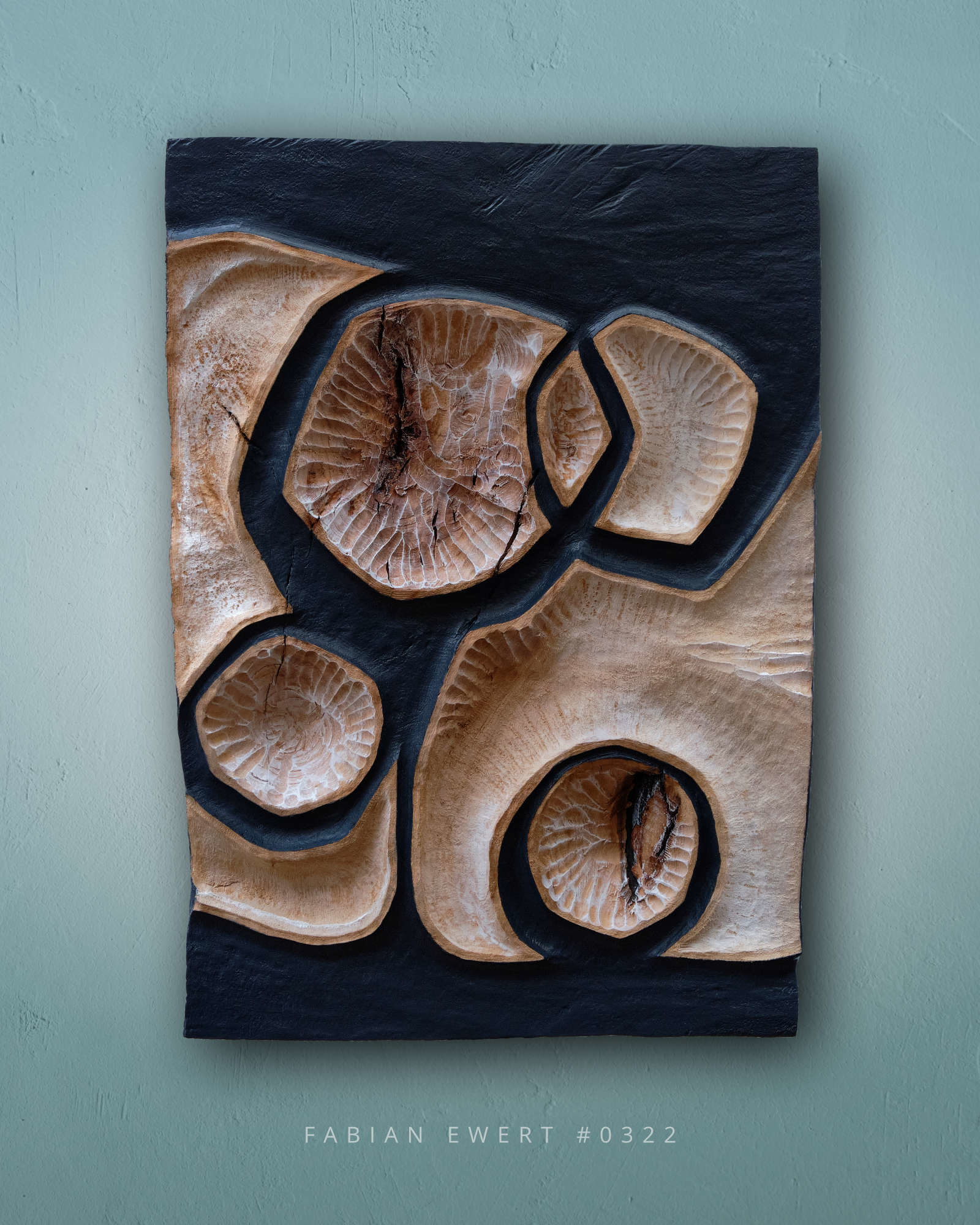
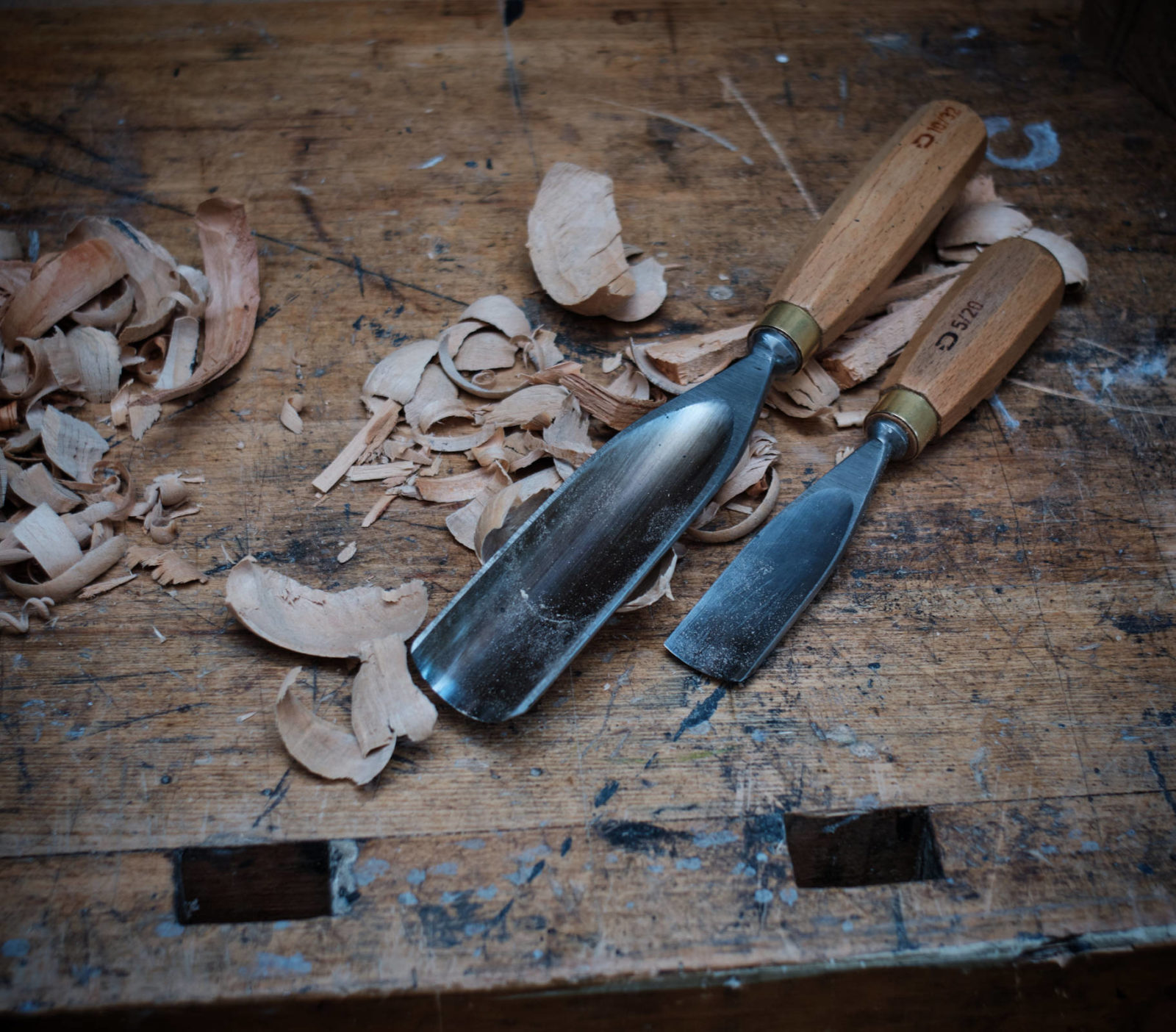
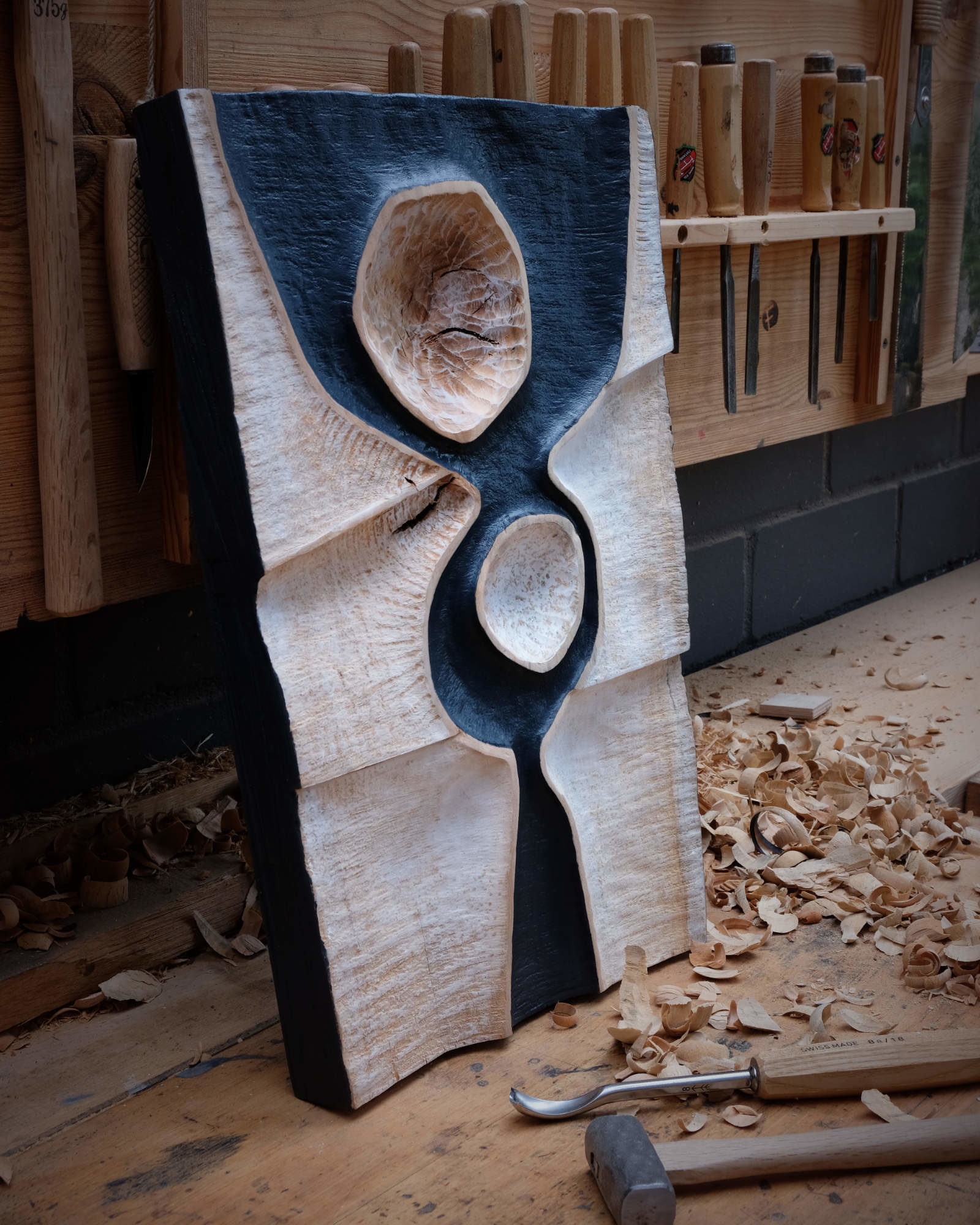
Wood is the material with which artist Fabian Ewert works exclusively – more than that: the specific material aesthetics of wood is the actual reason for him to have become an artist in the first place. As a trained carpenter, Ewert has gained a great deal of experience in working with wood and has a thorough knowledge of the material and its characteristics. The decision to embrace wood with decidedly artistic aspirations soon led Ewert, after a brief phase of self-assurance by means of creating figurative sculptures, to a form of work that proved to be the appropriate medium for him. Thus, in recent years, numerous non-representational reliefs characterized by a dynamic design have been created, which ideally meet Ewert’s artistic ideas. Instead of reliefs, he himself prefers to speak of “wall sculptures,” and indeed this term very accurately captures the essential essence of his art form.
Ewert’s works are sculptures in the sense of the definition, because in the course of the work process he only takes material out of the flat, more or less rectangular cut limewood panels that serve as his starting material. The subtractive process of cutting and chiseling out the wood, working oneself into the substance of the resistant material, the physical contact with the wood itself, are decisive production-aesthetic points in the art of Fabian Ewert.
Wood is one of the oldest sculpting materials. To this day, it has lost none of its fascination, its qualities of sensation. Surprisingly, the materials typical of our modern world – especially plastics of all kinds – have not been able to create comparable emotional bonds. Mostly, despite their everyday familiarity, they are perceived as aesthetically neutral at best, often enough even as banal or ugly. It’s no wonder that many plastic products imitate the look of stone or wood to give the appearance of nature. As a living, organic substance, wood has distinctive properties that are conveyed both visually and haptically and trigger characteristic sensations. This special material appeal is the heart of Fabian Ewert’s work. He therefore deliberately chooses wood trunks that show signs of life and thus would not be considered as useful wood, for example in furniture making, as the basic material for his wall sculptures. Differences in color, stains and discolorations, knotholes, cracks and burrs, conspicuous grains – all this is just right for Ewert to bring out the characteristic appearance of the wood. Cracks and discolorations are not concealed, but rather highlighted. Incidentally, Ewert’s works do not bear titles, because this would unnecessarily steer their contemplation in a certain direction; the year and serial number must suffice to identify a work.
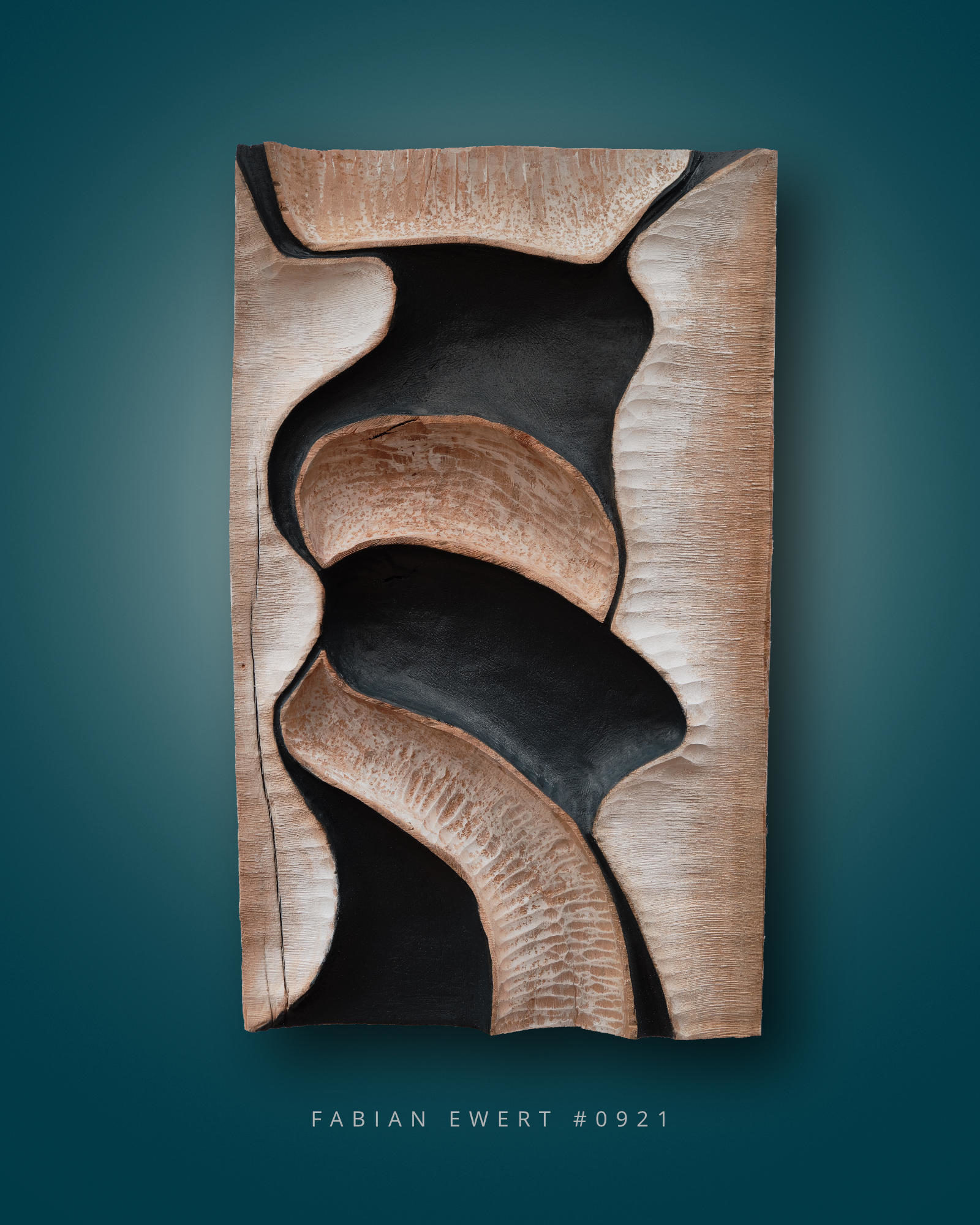
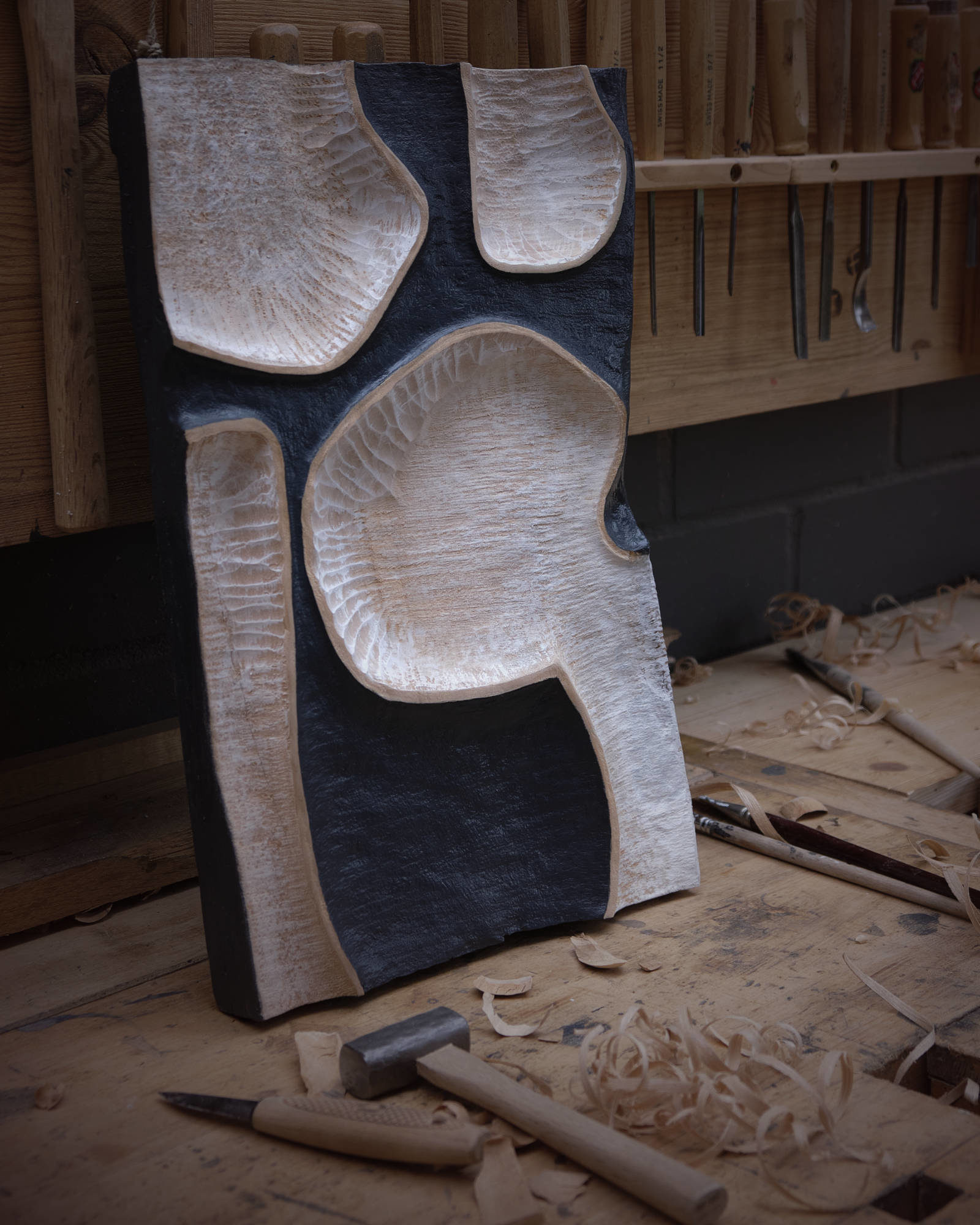
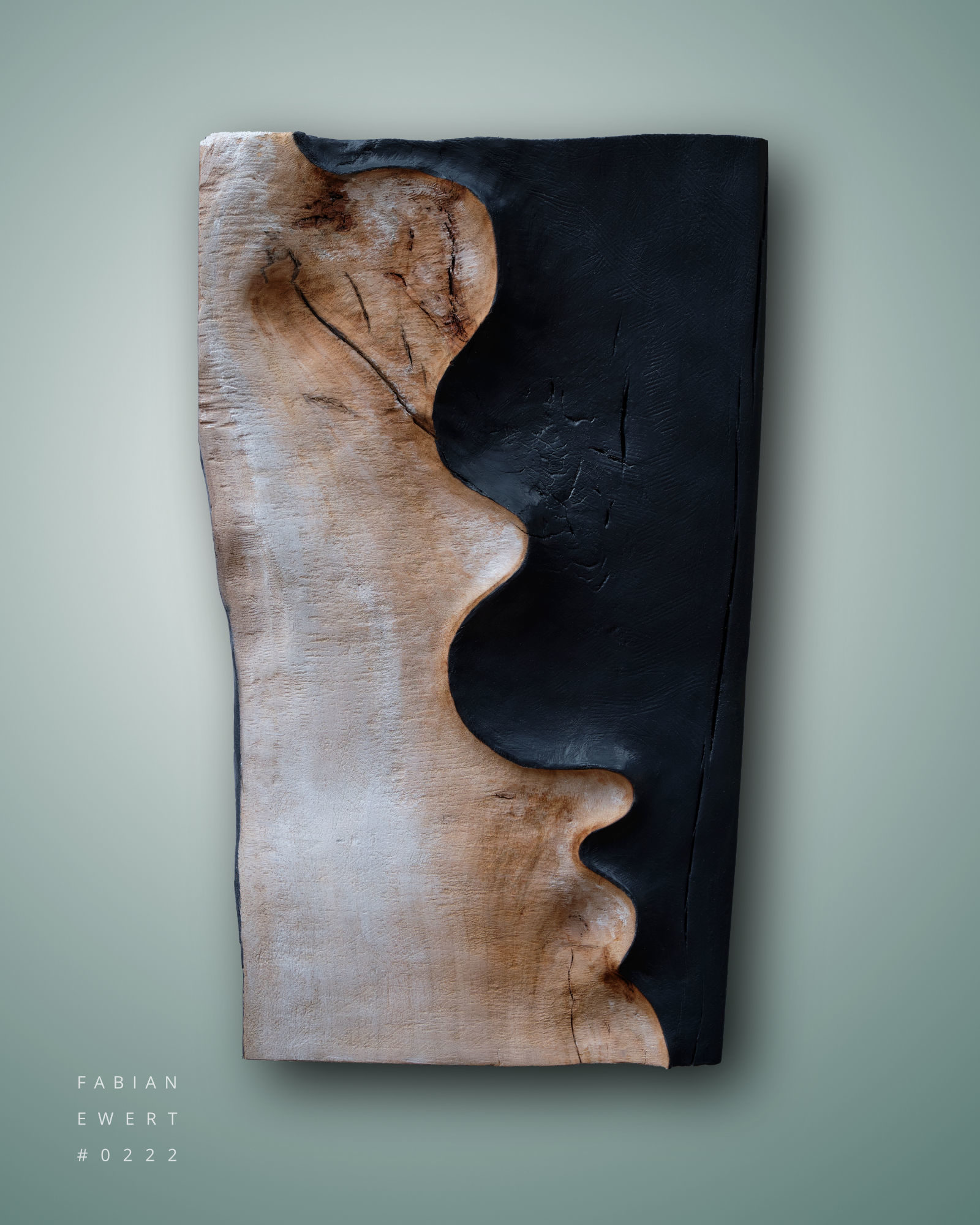
Ewert’s decision to specifically create wall sculptures is crucial to the reception of these works. When a work is hung on the wall a concrete relationship to its surrounding space is immediately established. The decision to place a relief in a certain place, at a certain height on a wall, where it is perceived as a whole, is tantamount to accepting the space and its conditions, especially the lighting situation. At the same time, this results in an intensive contact with the viewer. This is all the more true since Ewert’s works always approximate the rectangular format, which gives them a memorable, pictorial quality. Significantly, the wall sculptures are without exception vertical formats. This corresponds to the height growth of the tree – and indeed Ewert respects the vertical direction of the wood fibers – on the other hand, it also reflects the upright figure of the human being. In this way, a reference to one’s own body is established for the viewer – mostly unconsciously. Another reason for Ewert’s preference for the upright rectangular form may be the fact that, as a graphic designer, he has an obvious affinity for the common proportions of book and magazine pages.
The pictorial appearance of the wall sculptures is further emphasized by their basic graphic structure. They are visually determined by the contrast between the raised sections on the one hand, which are marked with acrylic paint in dark anthracite as well as a roughened surface texture, and areas cut deeper into the wood on the other, which retain the light inherent color of the limewood and are only partially accentuated by delicate traces of white paint. In keeping with the organic nature of the material, the forms Fabian Ewert gives his reliefs are vividly curved. He does not impose precise geometric lines on it, but enlivens the surface with curvaceous forms, squiggles and arches, which sometimes condense into concise signs or create a dynamic with and against each other of different line curves. The movement of the surfaces and lines always remains immanent in the rectangular “picture” area. The viewer’s eye is led in permanent movement across the relief, over ridges and bars, through concave curved valleys and crevices, but not beyond the “picture” edges to the outside. This centralization of the works, their visual compression, creates the formal concentration that encourages attentive viewing of the works. The wall sculptures are further enlivened by changing lighting. Depending on the incidence and intensity of light, including the corresponding formation of shadows, subtle but effective differences in the appearance of the works come about. For all their pictorial, graphic quality, they ultimately gain their uniqueness through their sculptural, physical presence.
Dr. Peter Lodermeyer